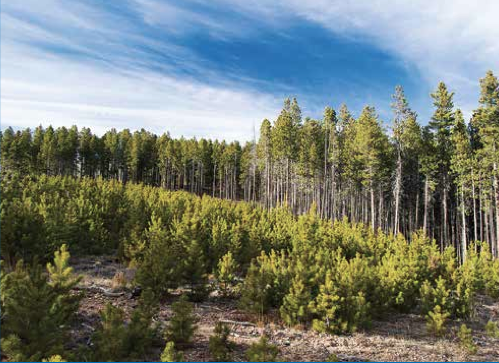
Colorado foresters know that Colorado’s forests are changing. And over the past two decades, the change has been significant. Colorado’s forests have seen unprecedented mortality, driven by poor resiliency to insects and diseases, according to Joseph Duda, interim state forester for the Colorado Forest Service.
“People should be concerned about the mortality because of the potential impacts on wildlife, watersheds, recreation sites and the creation of hazards — to name a few,” says Sky Stephens, a forest entomologist for the Colorado State Forest Service.
According to U.S. Forest Service researchers, however, Coloradans can tack yet another cause for concern onto the list: their health.
Forest Service researchers have used the emerald ash borer, a beetle that has killed more than 100 million trees in the eastern and midwestern U.S., to study the correlation between human health and forest health. They conclude that counties severely impacted by the emerald ash borer also had higher human mortality rates. While it is inaccurate to say that Colorado forests are dying, we can’t deny the fact that many Colorado trees are, which begs the question: Should Coloradans be concerned for their own health?
The Forest Service study, released in January, analyzed 18 years of data from more than 1,000 counties across 15 states. After accounting for demographic differences such as income, race and education, researchers found that Americans living in areas where the emerald ash borer had infiltrated forests had higher rates of lower respiratory and cardiovascular diseases than those living in non-infested areas.
From 2002 to 2007, an estimated 15,080 more cardiovascular-related deaths and an additional 6,113 respiratory-related deaths occurred in areas affected by the emerald ash borer than those that were not affected, according to the Forest Service study.
On the most basic level, we know that without trees, there would be no life, according to Joseph Crossno, associate professor of medicine at the University of Colorado Anschutz Medical Campus.
“Certainly, you need the foliage of trees for the cleansing of air — to take out carbon dioxide and to replenish it with oxygen,” Crossno says.
Crossno acknowledges that the U.S. Forest Service findings take common sense one step further — connecting tree health, air quality and respiratory health to form the ultimate trifecta.
“People from, you know, less forested areas are exposed to more occupational or environmental pollutants, and have higher rates of asthma, reactive airway disease or chronic respiratory illness,” Crossno says.
But Abigail Lara, assistant professor of medicine in the CU Division of Pulmonary Science and Department of Critical Care Medicine, is reluctant to draw such a direct correlation between tree mortality and human mortality.
“The authors make a strong argument for an association between tree and human health,” Lara says of the Forest Service report. “But they haven’t shown there to be a direct causation.”
Authors of the study, however, conclude that the findings do present a direct association between the loss of trees and human mortality from cardiovascular and lower respiratory disease. But the study did not prove a causal link. As for why trees affect human health, researchers propose several possible reasons: Trees reduce stress, moderate temperature and improve air quality.
Lara says she believes that trees do improve air quality, providing physical protection from unhealthy pollutants like diesel fuel exhaust.
“That being said, tree health is not likely to be the whole story, and other factors are just as, or ever more, important to illness in poorer communities,” Lara says. “In particular, I would argue the lack of money to buy healthy foods, as well as the lack of access to preventative health care.”
According to the U.S. Forest Service, however, the study accounted for the influence of demographic differences like income, race and education. Despite demographic differences, researchers argue, the link between tree mortality and human mortality still holds true.
“There’s a natural tendency to see our findings and conclude that, surely, the higher mortality rates are because of some confounding variable, like income or education, and not the loss of trees,” says Geoffrey Donovan, a research forester for the U.S. Forest Service, according to a statement released by the Pacific Northwest Research Station.
“But we saw the same pattern repeated over and over in counties with very different demographic make-ups.”
Respond: [email protected]














